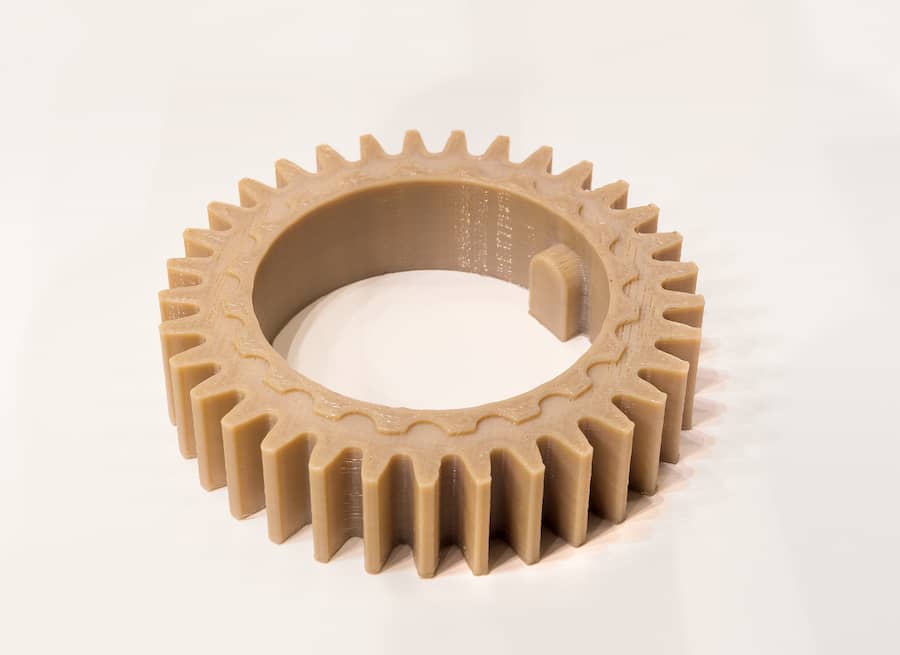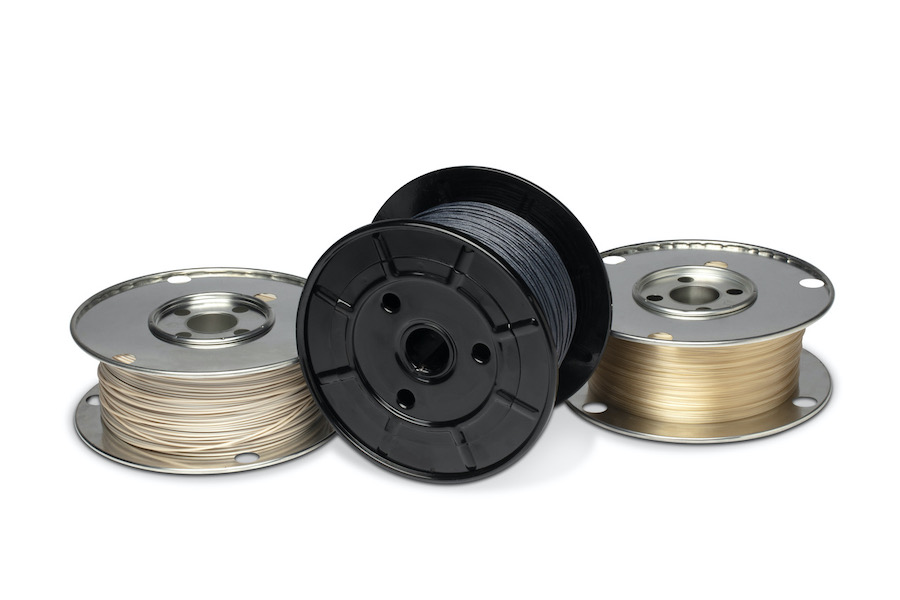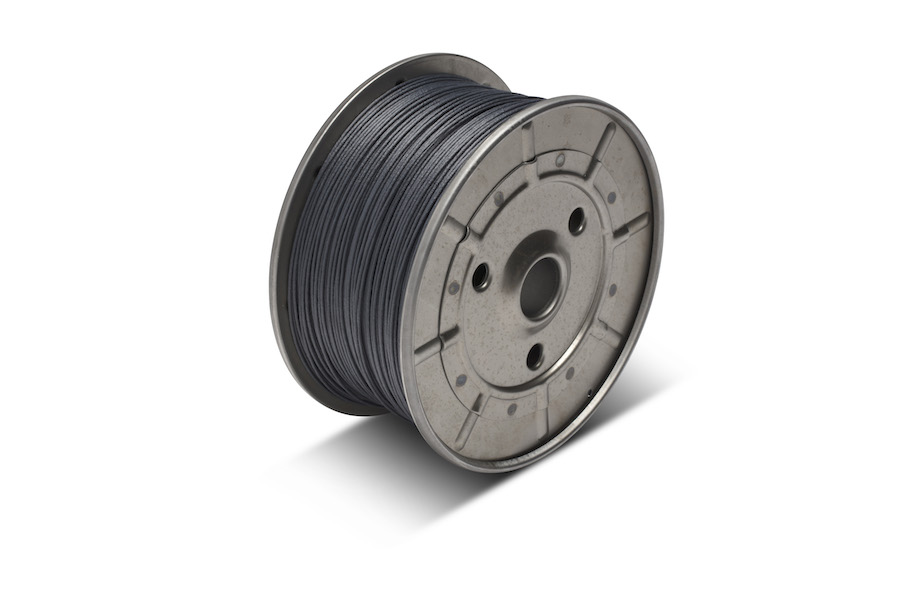3 Challenges in 3D Printing PEEK Plastic
Solvay
Arguably one of the most innovative technologies today is 3D printing, and it has been growing at a significantly rapid pace. Not only has it shown potential in disrupting industries, but it has also been incorporating more and more materials, giving rise to new opportunities and market potential. One such interesting material is PEEK polymer. It is a high-performance polymeric material with properties that enable its use in numerous application areas, including healthcare, automotive, oil & gas, and aerospace industries. However, when it comes to 3D printing PEEK, there still remain particular challenges that have to be addressed. Here, we will explore three main challenges and what you can expect and do to avoid undesirable issues.

Figure 1. A 3D-printed PEEK-based gear part (Credit: Solvay).
What is PEEK?
Polyetherether ketone, commonly known as PEEK, is a high-performance, thermoplastic polymer that belongs to the family of semi-crystalline thermoplastics, polyarylether ketones (PAEK). It can tolerate high temperatures thanks to its excellent heat resistance, not to mention its high chemical resistance, which enables it to withstand corrosive environments.
Along with its mechanical strength and wear resistance, these properties have allowed its use in demanding application areas that involve extreme conditions, such as aerospace, oil & gas, and automotive. PEEK polymer is also flame retardant, water-resistant, and sterilizable. This has helped its adoption in healthcare applications.
While it may be relatively expensive, PEEK offers significant advantages, including:
- Longer product lifetime thanks to its wear and corrosion resistance
- Higher fuel efficiency and lower friction
- Lightweight products due to its low density compared to metals
- Less waste due to its capacity to be melted and reused again
- More freedom in design than its metal counterparts
As a 3D printing material, PEEK filaments can be used for fused deposition modelling (FDM), also known as fused filament fabrication (FFF). This additive manufacturing process uses a melted thermoplastic filament and extrudes it through a nozzle to construct a part layer by layer. However, 3D printing PEEK has faced some challenges arising from FDM’s intrinsic issues, such as thermal gradient, and some of PEEK’s properties, such as its high melting point. This gave rise to the need for high-quality, highly specialized printing equipment.
So, while printing with a PEEK filament, you must be aware of certain specifics, so you do not end up with undesirable results and a defective part.
3 main challenges in using PEEK filament in 3D printing
The following are some of the main issues that you may face while 3D printing PEEK material and tips provided by industry expert, Solvay.
1. Overcome crystallization & deformation by temperature control during printing
Temperature fluctuations are a major problem for PEEK, as they can give rise to crystallization issues, deformation, or faulty prints. Improper crystallization can be observed in a color change, where you can see some amber color variation for amorphous areas rather than the natural beige color when the part is crystallized. Having multiple colors in a print can indicate inadequate temperature management.

Figure 2. Color variation on the part showing improper crystallization due to inadequate temperature management (Credit: Solvay).
For that reason, it is crucial to have good control of the temperature of your printing chamber. Given that the glass transition temperature of PEEK is about 150 °C and its melting point is around 343 °C, Solvay suggests the following temperatures as conditions for printing PEEK:
- Chamber temperature: > 180 °C
- Bed temperature: 180 – 220 °C
- Extruder temperature: 400 – 440 °C
Maintaining these temperatures at these levels is crucial to having a high-quality print. Furthermore, the printer’s surrounding environment could also have an influence. Keeping the printer in a place with the smallest temperature fluctuations possible is recommended.
2. Avoid shrinkage by using Solvay’s fiber-reinforced PEEK material
Three of the most critical issues that PEEK faces upon printing are shrinkage, warpage, and delamination.
After the high-temperature printing, PEEK needs to cool down in order to solidify. During cooling, the material tends to shrink due to the variation of the specific volume linked to the polymer physics of a semi-crystalline material. Since PEEK requires high temperatures to be printed, this may result in more rapid cooling post-printing. A higher cooling rate results in a higher shrink rate, which could reach up to 2%, rendering PEEK a highly challenging material to print.
In fact, if the component undergoes a high shrink rate, it may suffer from warpage, particularly at the edges. This can lead to the part detaching from the bed and failing the printing. Basically, since the edges are areas of high stress concentration, these stresses reinforce the retraction forces caused by cooling until they overpower the opposing adhesion forces between the part and the bed. As a result, the part would separate from the bed. Some specific solutions and printing strategies, like the choice of the bed material or some design optimisation of the part, can help prevent this scenario in combination with the controlled temperature management.
In addition, during printing, residual stresses may arise and accumulate between the layers, leading to interlayer delamination. This can highly affect the dimensional accuracy and mechanical properties of the PEEK part.
In order to overcome these issues, you need to maintain a relatively high temperature inside the printer. That is why using a heated chamber (> 180 °C) would enable the part to crystallize more slowly, which would give you the ability to control the shrink rate. This helps to achieve full crystallization during printing and eliminates the need for post-printing annealing. Plus, using Solvay’s fiber-reinforced PEEK material (10% carbon-fiber reinforcement) can help prevent warpage and support the orientation within the material, minimizing the risk of detachment or delamination. The fiber length can also significantly affect the strength of the material in specific directions.

Figure 3. Solvay's collection of 3D-printing PEEK filaments (Credit: Solvay).
3. Prevent specking by maintaining clean and dry equipment/environment
The cleanliness of the equipment is crucial to the quality of your print. Having leftovers on the extruder’s nozzle, for example, could block the nozzle and eventually result in black specks on your material. In fact, contamination, a malfunctioning printer, lack of temperature control, and possible impurities in your PEEK material could all lead to specking.
In addition to that, the PEEK filament should always be kept dry to achieve optimal printing performance, even though PEEK does not absorb moisture as much as other polymers.
Prior to printing, make sure your filament is dry by storing it inside a sealed container in a place of low humidity, low temperature, and low lighting. It is also recommended that you place the filament in an oven at around 120 °C for at least four hours before you use it for printing.
During printing, it is important to keep the filament in a dry environment, as well. Some printers are already equipped for a dry medium, but it is also possible to connect the filament from another drying system.
Applications and sources of high-quality PEEK filaments
PEEK polymer as a 3D printing material has found its way into several industries and markets, most prominently the aerospace, automotive, and medical industries.
In aerospace, it can be used as wire coating, which provides high abrasion resistance and light weight. In automotive, it offers numerous advantages and use opportunities, including wire protection, seals, washers, and bearings. Its lightweight and high mechanical properties can help improve the performance of vehicles and their electronics. It is also a common material for prototyping. As for healthcare, its chemical inertness and defect-free sterilizability enable its use in medical implants, given that the right certified material is used. It is an ideal material, as well, for probes that are inserted and guided through the body, thanks to its stiffness and tight bend radius.
Solvay’s KetaSpire® PEEK materials are high-performance polymers that provide long-term service, even under high temperatures up to 240 °C. The table below displays some of the main properties of both their pure PEEK and fiber-reinforced PEEK filaments. For more information, check out the materials’ corresponding datasheets.
Table 1. Properties of Ketaspire® PEEK from Solvay.
|
Property * |
KetaSpire® PEEK MS NT1 AM Filament |
KetaSpire® PEEK CF10 LS1 AM Filament |
|
Composition |
Pure PEEK |
10% carbon-fiber-reinforced PEEK |
|
Density |
1.29 g/cm3 |
1.33 g/cm3 |
|
Diameter |
1.75 mm |
1.75 mm |
|
Elastic modulus |
3.12 GPa at 23.0 °C |
11 GPa at 23.0 °C |
|
Elongation |
26 % at 23.0 °C |
1.7 % at 23.0 °C |
|
Impact strength |
81 J/m at 23.0 °C |
89 J/m at 23.0 °C |
|
Tensile strength (at Break) in X-orientation |
48 MPa at 23.0 °C |
140 MPa at 23.0 °C |
|
Melting point |
343 °C |
343 °C |
|
Color |
Natural |
Black |
|
* Property values were obtained in samples with 100% infill. |
||
Solvay is a world leader in high-performance specialty polymers. We provide you with the broadest selection of advanced materials. Our offer is unique. We have developed an unmatched portfolio of more than 1500 different formulations available for you to develop future applications for your industry.
Our products have been created to maintain their performance in the harshest environments: each one with the specific combination of properties needed for exceptional heat resistance and chemical inertness, strength and toughness, lightweighting and design flexibility, biocompatibility and many more.
Today, Solvay has collaborated with Matmatch by listing our materials on the platform to support more engineers and product developers with their materials and services.
- Explore the list of materials by Solvay.
- Visit the supplier profile to get in direct contact with us.

Figure 4. Solvay's Ketaspire® PEEK CF 3D-printing filament (Credit: Solvay).
Article by Solvay Specialty Polymers
Solvay is a world leader in high-performance Specialty Polymers, we provide you with the broadest selection of advanced materials. Our offer is unique. We have developed an unmatched portfolio of more than 1500 different formulations available for you to develop future applications for your industry.
Our products have been created to maintain their performance in the harshest environments: each one with the specific combination of properties needed for exceptional heat resistance and chemical inertness, strength and toughness, lightweighting and design flexibility, biocompatibility and many more.
Our materials meet the needs of the most demanding industries, ranging from deep-sea exploration to implantable spinal devices.

